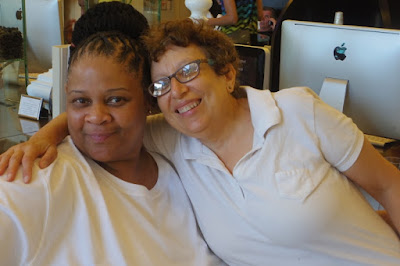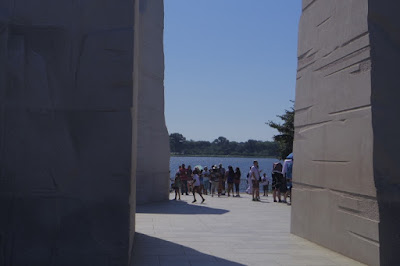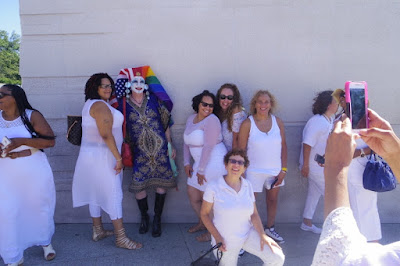| On Sunday, I saw a movie titled “13th.” It is a documentary about mass incarceration, and it was directed by Ava DuVernay. It was an impressive movie that explored the history of mass incarceration, the war on drugs, and racism. According to the Pew Research Foundation, the prison population in the United States increased by 700 percent between 1970 and 2005. The United States now has five percent of the world’s population and 25 percent of the world’s prison population.
So… are Americans terrible malefactors who asked for this terrible fate… or is something else going on here?
“After a 700-percent increase in the US prison population between 1970 and 2005, you’d think the nation would finally have run out of lawbreakers to put behind bars,” said the report by Pew’s Public Safety Performance Project.
Apparently not. People who were interviewed in the movie, which included Michelle Alexander, author of The New Jim Crow, which is about racism and mass incarceration, described prison as a growth industry in the United States. The “war on drugs,” combined with a “get tough on crime” mentality in the 1970s and 1980s and beyond, made prison a very lucrative growth industry.
Some of the prisons are owned by for-profit companies, which have found the incarceration of human beings to be quite lucrative. According to Wikipedia, Corrections Corporation of America was, in 2015, the largest private corrections company in the United States. It manages more than 65 correctional and detention facilities, with more than 90,000 beds in the District of Columbia and nineteen states. In 2012, its total revenue exceeded $1.7 billion.
That is a lot of money. To me, making money off of the incarceration of human beings seems rather perverse.
When I was in the federal prison camp in Danbury, Connecticut, for crossing the line at Fort Benning, Georgia, to protest against the School of the Americas (more than once), there were several things that I observed:
- I never once met anyone in prison who could be considered a menace to society
- Many of the women had children and they were trying to raise their children via 15-minute phone calls each day. They were allowed to talk on the phone (at inflated prices) for 300 hours a month.
- The women who had issues with drug addiction had to wait until nearly the end of their sentences to get into a residential drug treatment program.
- Everyone had to work. The pay was very minimal. Inmates were considered to be government property because of this very bizarre loophole in the 13th amendment that said that slavery was outlawed, except as punishment for crime after the “party has been duly convicted.”
- The food in prison was often served well past its expiration date. Medical care in prison was inadequate, and often borderline malpractice. People in prison were considered to be malingerers who were avoiding work, even when it was obvious that they were seriously ill. I knew several women who died because they did not get adequate, timely health care.
- People who went to prison on crack cocaine charges were sentenced to far more prison time than those who went to prison for powdered cocaine charges. This disparity in sentencing was considered to be a blatant example of racism in the criminal justice system that is already racist. Statistics show that one in every fifteen black men and one in every 36 Hispanic men are incarcerated, as opposed to one in every 106 white men. I also learned that the government cast a wide net in an attempt to catch anyone who might be remotely connected to the illegal drug business. Sometimes, they caught nonparticipants, such as wives, girlfriends, grandmothers, etc.
- The nonparticipants were informed that they should have reported the drug dealing family members and that being clueless was not a valid excuse. They were charged with conspiracy and were threatened with draconian sentences unless they agreed to plead guilty and accept a “mandatory minimum sentence,” sometimes as long as ten or even twenty years. When someone is charged with conspiracy, the government doesn’t actually have to produce evidence, such as the drugs, to link the defendant to the crime. That can be called “guilt by association.”
- Being placed in the segregation unit for a long time caused people to suffer from mental health issues, such as post-traumatic stress disorder. Being locked in a cage for 23 hours a day and having very little human contact, other than a cagemate, is a very difficult way to live. In August 2011, United Nations Special Rapporteur on torture and other cruel, inhuman, or degrading treatment or punishment, concluded that even 15 days in solitary confinement constituted torture, cruel, inhuman, and degrading treatment or punishment.
- I learned a lot of gardening skills in prison as a result of my prison job.
- Many of the women who were in prison with me are now activists who are working to end mass incarceration. They want to make sure that families do not have to suffer from having a parent in prison for many years for “conspiracy.”
- I made friends for life in prison. In August, I went to Washington, D.C., for a reunion of some of the friends that I made in Danbury. We found that, because we had all survived the prison experience, we were truly sisters for life.
|









Thanks for the information. I have read that the US is building more prisons than they are building schools.
I like a sign that I saw saying children need to spend more time on basketball courts and less time in judicial courts.
blog on!
We have adherents of one party screaming "lock em up" and "lock her up". Obviously, they are prime believers in mass incarceration.